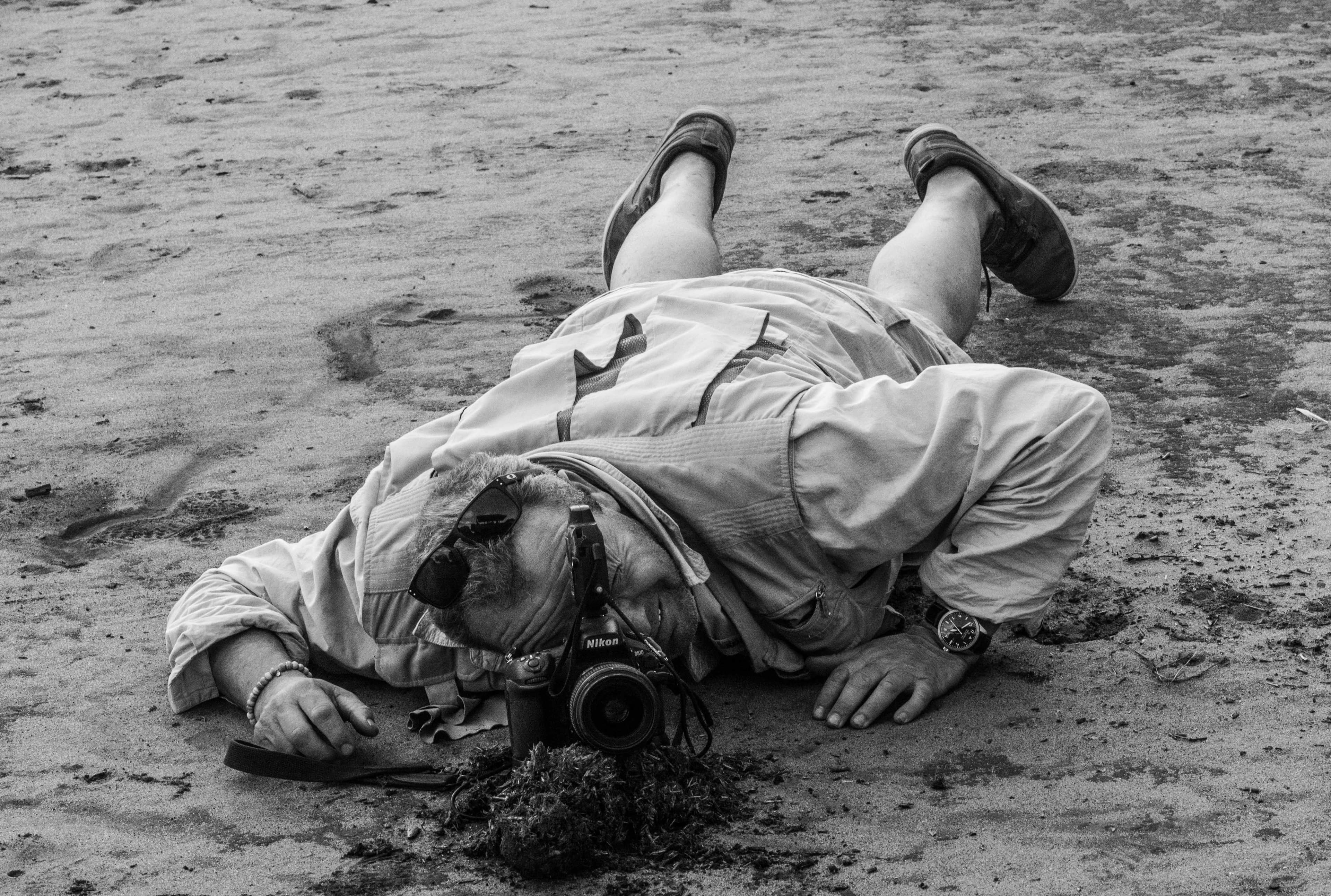The Departed
Narrative
Behind the scenes
Prints
The Departed
Mkomazi Game Reserve, Tanzania - 2015

This impactful image taken late one afternoon in Mkomazi Game Reserve in Tanzania has a level of simplicity that belies the complications in its capture. I can see no better way of conveying the power and prehistoric face of a rhinoceros than using a wide-angle lens with a remote control body strategically placed on the ground in the predicted path of a rhino.
This approach has a high failure rate – if it didn’t, there would be more pictures knocking around like The Departed and I can’t find a single one. Not only is the image pin sharp, but also the rhino is totally uninfluenced by the camera on the ground – he is being a rhino, not a model for a photo shoot. The focus was set to manual and the light prejudged, so there was a great deal left to chance, but equally I had been working on attaining an image like this for four years. Remote control work is an art in itself and over the years I have learnt a great deal. It is a cognitive process that leans mostly on analysis of previous misjudgements.
The key is to be ambitious in setting the focus no more than three feet from the camera. This will then give the head of the animal a disproportionate amount of the frame. It is a low percentage approach, but then again who wants to deal with high percentage photography? That’s a little dull.
Tony Fitzjohn is a legend in East Africa. Only a rare few have had feature films telling their story and he is one. ‘To Walk With Lions’ documented his early days with George Adamson in Kenya and his move to Mkomazi. He knows black rhinos well and knows this one particularly well. This proved to be of critical importance in predetermining the position of the camera relative to the watering hole (over the years much of my work with rhinos has involved the calculating use of watering holes). Without him, I had no chance of taking this image and I am so grateful for his advice and support.
Tanzania has shocking history of tolerance to poaching and since the 1970’s, the rhinoceros population has fallen from 3000 to just 90. Only recently has this troubled country become more progressive in conservation, but it may well be too late.
So this image is rare on two levels. Firstly, it depicts one of the 90 remaining black rhinos in the country and how spiritually uplifting to have captured him in seemingly the very best of form. Secondly it does this with a spectacularly rare angle of view.
This image is called ‘The Departed’ to honour the 99% of rhinos in Tanzania that have indeed departed, just as in the Oscar winning film with the same title – very few are left at the end to tell the story. What a dreadful legacy of our tenancy of this planet and only a few men like Tony can possibly save the rhinoceros from extinction in Tanzania.

“ I can see no better way of conveying the power and prehistoric face of a rhinoceros than using a wide-angle lens with a remote control body strategically placed on the ground in the predicted path of a rhino.
David Yarrow
Print sizes
Standard
37" x 44.5" Unframed
52" x 59.5" Framed
Edition of 12
Large
56" x 67.4" Unframed
71" x 82.4" Framed
Edition of 12















